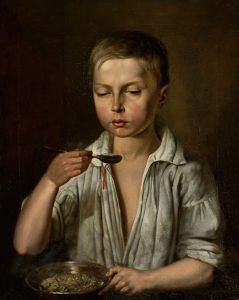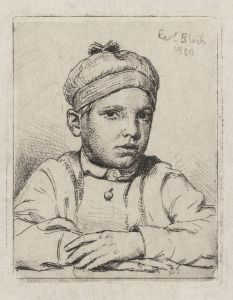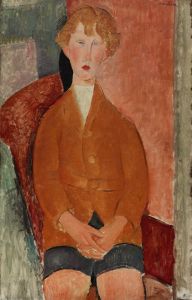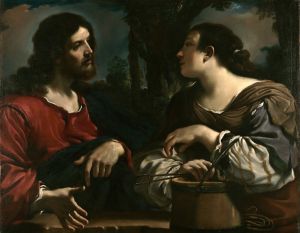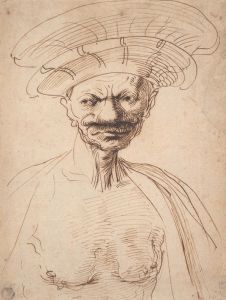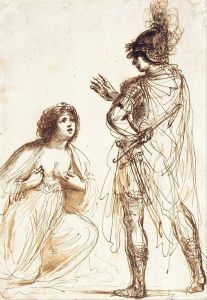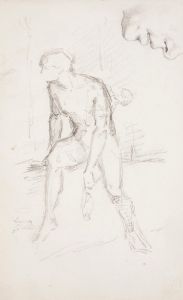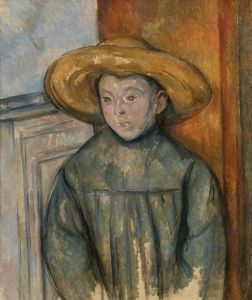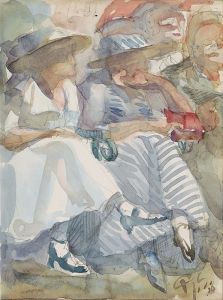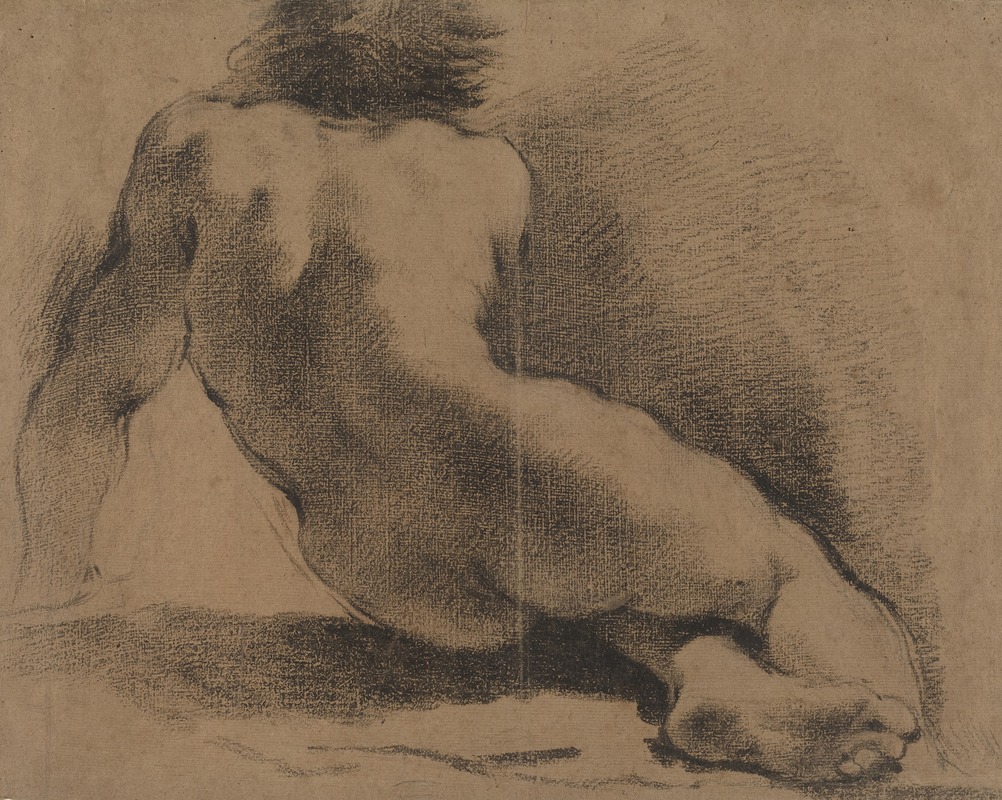
Seated Nude Boy Seen from the Back
A hand-painted replica of Guercino’s masterpiece Seated Nude Boy Seen from the Back, meticulously crafted by professional artists to capture the true essence of the original. Each piece is created with museum-quality canvas and rare mineral pigments, carefully painted by experienced artists with delicate brushstrokes and rich, layered colors to perfectly recreate the texture of the original artwork. Unlike machine-printed reproductions, this hand-painted version brings the painting to life, infused with the artist’s emotions and skill in every stroke. Whether for personal collection or home decoration, it instantly elevates the artistic atmosphere of any space.
"Seated Nude Boy Seen from the Back" is a drawing by the Italian Baroque painter Giovanni Francesco Barbieri, better known as Guercino. Guercino, which means "squinter" in Italian, was a nickname derived from a childhood eye defect. He was born on February 8, 1591, in Cento, a town near Bologna, and he became one of the most prominent artists of the 17th century.
The drawing "Seated Nude Boy Seen from the Back" is a fine example of Guercino's skill in capturing the human form with remarkable realism and sensitivity. The artwork depicts a young boy seated with his back to the viewer, showcasing the artist's adept use of chiaroscuro – the contrast of light and shadow – to create a sense of depth and volume. The boy's posture is relaxed, with his head slightly turned, allowing a glimpse of his profile. This subtle twist adds a dynamic quality to the otherwise serene composition.
Guercino's mastery in rendering the human anatomy is evident in the detailed depiction of the boy's musculature and the naturalistic portrayal of his skin tones. The drawing is executed with a combination of delicate lines and soft shading, highlighting Guercino's proficiency with the medium. Although primarily known for his paintings, Guercino was also an accomplished draftsman, and his drawings were highly regarded for their technical excellence and expressive quality.
The exact date of the creation of "Seated Nude Boy Seen from the Back" is not precisely known, but it is believed to have been produced during the early to mid-17th century, a period when Guercino was actively working in various Italian cities, including Bologna and Rome. During his career, Guercino received numerous commissions from prominent patrons, including Pope Gregory XV and the Ludovisi family, which allowed him to establish a significant reputation.
Guercino's works are characterized by their dynamic compositions, vigorous brushwork, and dramatic use of light and shadow. His style evolved over time, reflecting the influence of other contemporary artists and the changing tastes of the Baroque period. Despite these shifts, his drawings consistently demonstrate a keen observation of the human figure and an ability to convey emotion through subtle gestures and expressions.
"Seated Nude Boy Seen from the Back" is part of a larger body of Guercino's work that includes religious, mythological, and genre subjects. His drawings, like this one, were often preparatory studies for larger paintings or independent works of art. Today, Guercino's drawings are held in high esteem and can be found in major art collections and museums around the world, including the British Museum, the Louvre, and the Uffizi Gallery.
In summary, "Seated Nude Boy Seen from the Back" exemplifies Guercino's exceptional talent as a draftsman and his ability to capture the human form with both technical precision and emotional depth. This drawing remains a testament to his enduring legacy in the history of art.





